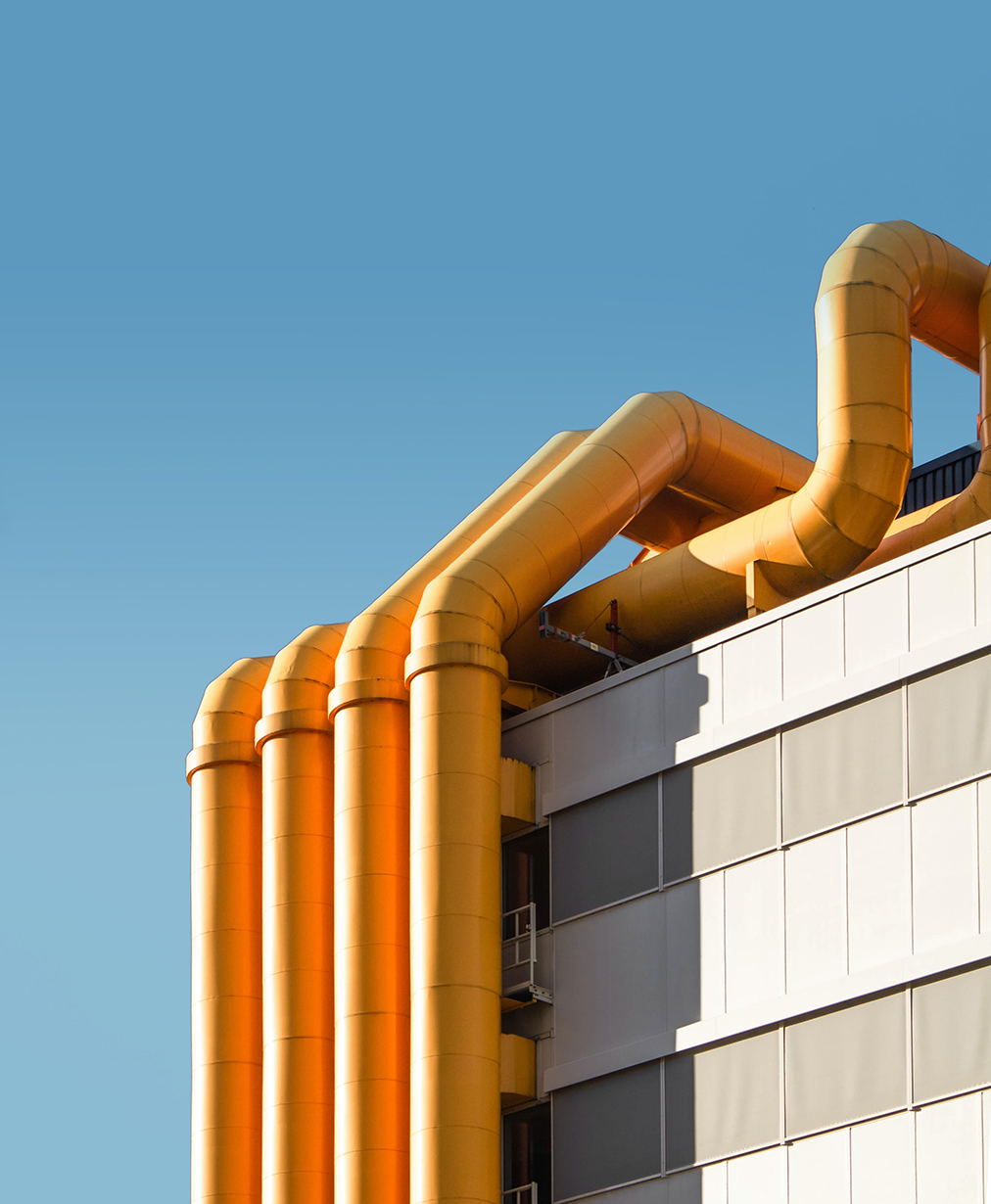[breadcrumb]
Air conditioning systems — cleaning and disinfection with Sanosil
HVAC cleaning products for air conditioning systems and ventilation ducts: the problem
HVAC cleaning products play an important role in HVAC maintenance. While air conditioning systems and ventilation ducts ensure increased comfort and pleasant temperatures during hot weather, unless properly maintained they can also act as “incubators” for all kinds of microbes, such as bacteria, fungi, mould and yeast. Large numbers of these microbes are then carried into the building’s living areas in the air flow, where they may adversely affect the health of the occupants. Therefore, proper HVAC mold treatment is of great importance.
Contaminated air conditioning systems: a hazard solved with HVAC cleaning products
HVAC cleaning products are used for all parts of air conditioning systems. Air conditioning systems use heat exchangers to cool the air down to a comfortable level before it is distributed through the ventilation ducts. Although this creates a pleasant atmosphere in which to live and work, it can also create a refuge for pathogens. When cooled, air loses its ability to bind moisture — as a result, a certain amount of condensation water always settles on the fins of the heat exchanger and in the ventilation ducts.
In combination with the dust and dirt in the air, this condensation water forms a wonderful breeding ground for microorganisms — especially if the air conditioner and ventilation ducts are operated infrequently and the mixture of condensation water and dust in the ventilation ducts is repeatedly heated to an optimal 30 to 40 degrees Celsius. Unless the air conditioning system is cleaned and disinfected with HVAC cleaning products, these microbes will then be blown into the room air and inhaled by the occupants — with unpleasant consequences.
[expander_maker id=”2″ more=”Read more” less=”Read less”]Sick Building Syndrome in poorly maintained air conditioning systems
In some cases, things can get even worse — air-conditioning systems that are not regularly cleaned and disinfected emit metabolic by-products from bacteria (so-called enterotoxins) into the air. Not only can these enterotoxins penetrate the downstream filter stages in the air conditioning system, they also cannot be detected during measurements of airborne microbial contamination.
However, they can cause severe allergic reactions such as conjunctivitis, respiratory irritation, asthma and even pneumonia. These symptoms, which are caused by enterotoxins in the air conditioning system, are referred to as Sick Building Syndrome.
However, SBS should not be confused with a mould infestation in the air conditioning system or ventilation ducts. In the latter case, mould spores rather than enterotoxins are blown into the air. The symptoms are similar, however they are actually caused by allergenic surface proteins on the spores and mould toxins.
Cleaning air conditioning systems with HVAC cleaning products
HVAC cleaning products must be used properly. Simply disinfecting an air conditioning system without first cleaning it is ineffective and therefore a waste of both time and materials. This is because the existing dirt layers prevent the disinfectant from penetrating fully into the system. In addition, the dirt reacts with the disinfectant and reduces its effectiveness. Therefore, it is essential to first clean the air conditioning system and ventilation ducts.
Regular cleaning of the air conditioning system is not particularly difficult — however in many cases it can be fairly labour-intensive. Firstly, all parts of the air conditioning system and the associated ventilation ducts must be made accessible. Subsequently, the dirt and dust layers must be removed, for example using rotating brushes on flexible, extendable poles.
Ideally, this should be done under negative pressure so that the detached dust particles are sucked away. For such purposes, there are actually self-contained cleaning robots that can be sent through the channels to perform cleaning, suction and disinfection in air-conditioning and ventilation systems in successive operations.
Disinfecting air conditioning systems: spray disinfection
Once cleaned, the ventilation ducts can be disinfected. A simple option here is spray disinfection, whereby disinfectant is sprayed directly onto the surfaces to be disinfected from a relatively short distance.
A variant of spray disinfection for air conditioning systems is cool mist disinfection — the difference here is that the spray droplets are smaller. Normally, this type of spray pattern is produced with compressed air and fine nozzles or an airless spray device, a part of HVAC air duct cleaning equipment — such as those used in paint shops. The advantage is that this fine spray mist is able to penetrate further around curves and obstacles and the HVAC cleaning products thus achieve a better surface coverage.
Disinfection in air-conditioning and ventilation systems: aerosol disinfection
Aerosol disinfection is an alternative to spray disinfection for air conditioning systems. With this method, the HVAC cleaning products i.e. disinfectant is atomised into microscopic droplets that are even smaller than those used in cool mist disinfection. Using special HVAC air duct cleaning equipment, his dry disinfectant mist then penetrates into all crevices and other areas of the air conditioning system and takes effect there. The major advantage of aerosol disinfection is that excellent coverage of all surfaces is ensured.
A disadvantage is the higher susceptibility to general soiling — since a smaller quantity of disinfectant is used, it is less able to overcome residual contaminants. Therefore, aerosol disinfection can only be used effectively once the ventilation ducts have been thoroughly cleaned. [/expander_maker]


